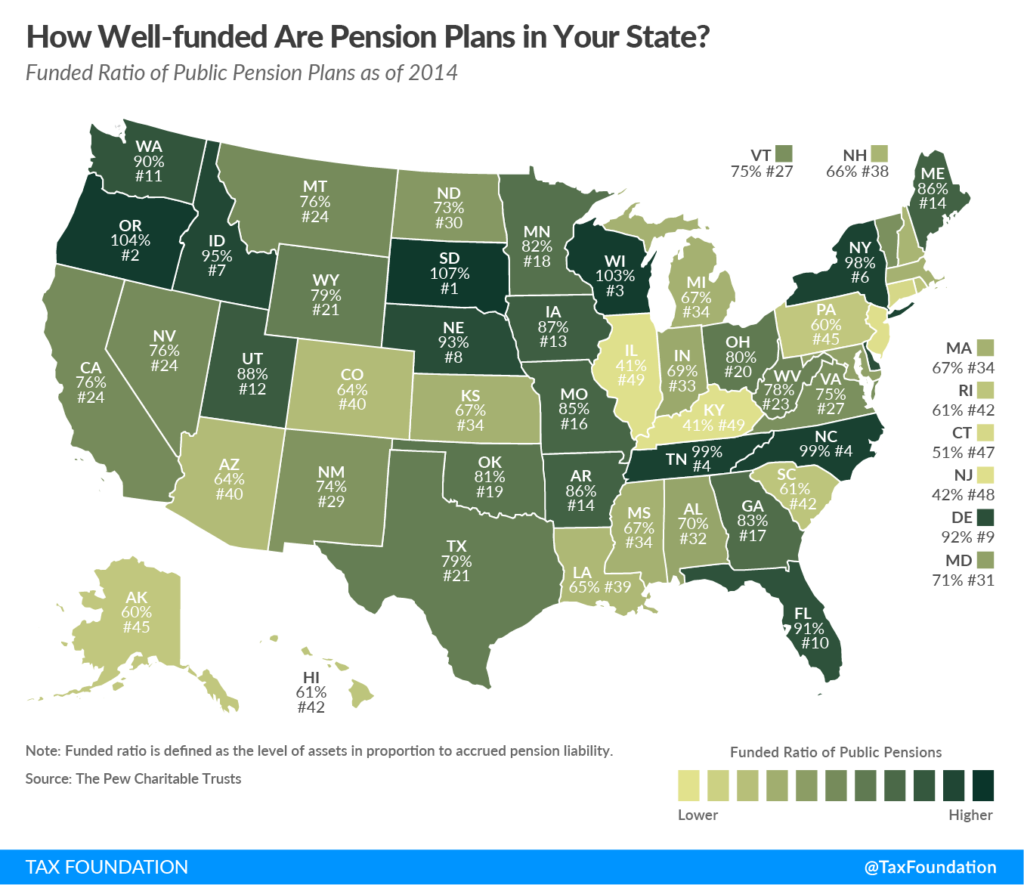The Tax Foundation has created a map of each state’s pension funding situation. It’s not pretty. If you live in South Dakota, Oregon or Wisconsin, your state is in great shape. All three have funded their pensions over 100%. But if you rely on a state pension in Illinois or Kentucky, it could get rocky. Both states’ pensions are funded at only 41%. That’s the worst in the country.

The answer could be transitioning state employees into defined contribution plans rather than relying on the defined benefit plans that have been the norm for public pensions through history. Analysts Morgan Scarboro and Jared Walczak write for the Tax Foundation:
According to preliminary 2015 data, state and local pension debt now exceeds a combined $1.5 trillion. Strong returns on investment (averaging 17 percent in 2014) have helped to reduce the debt, but the message is still clear: many states are facing a pension crisis.
States vary in the way they structure their pension systems, but some states are transitioning new employees into defined contribution or hybrid plans rather than more traditional, and more costly, defined benefit plans. Defined contribution plans give employees control of their own investment account, while defined benefit plans promise employees a lifetime annuity. This move toward defined contribution plans can be a step toward fiscally sound pension plans for states; however, it doesn’t address existing pension debt.
Read more here.



